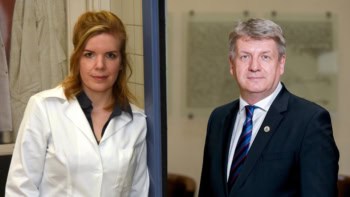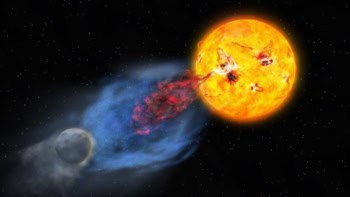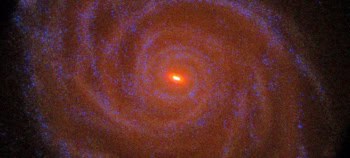
A European project that will allow astrophysical events to be tracked across the whole sky for the first time has begun and is already recruiting its personnel. Funded with €3m from the European Research Council over the next five years, the 4 Pi Sky project will use a combination of ground- and space-based telescopes to study rare events such as colliding neutron stars and exploding supernovae.
4 Pi Sky combines three separate terrestrial telescopes systems. One is the Low Frequency Array (LOFAR), consisting of some 10,000 dipole antennas across Europe, that will be used to track objects at a frequency range of about 30–240 MHz. The others are the MeerKAT array in South Africa and the Australian Square Kilometre Array Pathfinder (ASKAP) in Western Australia, which will be used to track phenomena at higher frequencies of about 1 GHz.
Linking telescopes
When combined, the telescopes will be able to monitor the whole sky, as scientists will be able to link from telescope to telescope to follow transient phenomena as the Earth rotates. Using this technique, researchers are expected to find and track thousands of new events that would have previously been missed.
“This is really a project that will try and co-ordinate what we can do with these telescopes in terms of optimizing their performance and getting the software up and running,” says Rob Fender, an astronomer at the University of Southampton in the UK, who is leader of the 4 Pi Sky project. He adds that it will take at least another three years until all three telescopes come online and are fully networked due to the construction timelines for MeerKAT and ASKA. Part of the network, however, will be working on LOFAR this year.
In addition to the ground-based telescopes, 4 Pi Sky researchers will also be able to use the Japanese Space Agency’s Monitor of All-sky X-ray Image (MAXI) telescope aboard the International Space Station, which studies events at wavelengths between 0.5 and 30 keV. “A lot of transient phenomena that we study with the radio telescopes has an X-ray component and we will be able to study that with MAXI,” says Fender.
As well as studying the birth of black holes, the project might even help researchers to identify the sources of gravitational waves. Although 4 Pi Sky will not be able to detect such waves directly, if these ripples in space–time are spotted by another facility, then astronomers will be able to use 4 Pi Sky see if the production of the waves was accompanied by an explosion of radio signals.
SKA on the horizon
Meanwhile, two rival teams of astronomers in South Africa and from Australia and New Zealand are continuing to compete for the right to host the Square Kilometer Array (SKA), which will combine the signals from thousands of small antennae spread over a total collecting area of approximately one square kilometre. Both MeerKAT and ASKAP are being built as technology demonstrators for SKA, which will be a radio telescope capable of extremely high sensitivity and angular resolution.
In the past week, the South Africa campaign is claiming to have made two major breakthroughs in its bid to host the telescope array. First, they have combined data from two radio telescopes at separate locations using a technique known as “very long baseline interferometry”, which had previously required assistance from foreign countries. Second, South African computer engineers have also finished building the computer hardware, ROACH 2, that they believe will provide the data-processing capabilities for SKA.
“In 2011 South Africa in conjunction with its eight African-partner countries bidding communally for the SKA will pull out all the stops to show the world that Africa is the future as far as science and technology are concerned,” says Bernie Fanaroff, director of South Africa’s SKA Project. A final decision on who is to host SKA will be made in 2012 based on a number of criteria, including operating and infrastructure costs and the levels of interference from sources such as mobile phones and televisions.



